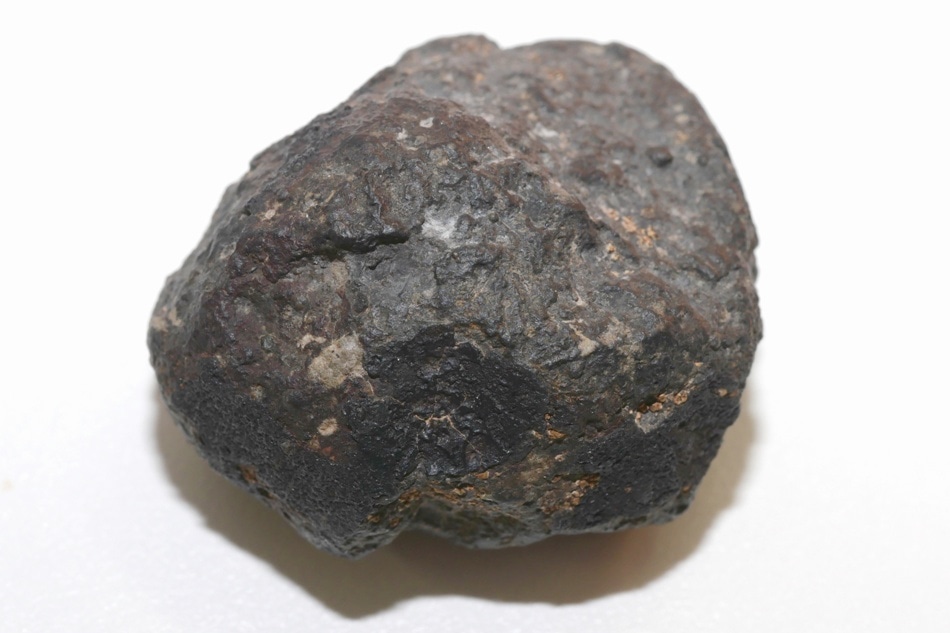May 13 2019
Aluminum monoxide (AlO) has been mapped by astronomers in a cloud surrounding a faraway young star—Origin Source I. The discovery elucidates certain vital details about the evolution of the solar system, and ultimately the humankind.
 A small chondrite meteorite, just smaller than a golf ball, containing minerals rich in calcium and aluminum. (Image credit: © 2019 Rohan Mehra—Division for Strategic Public Relations)
A small chondrite meteorite, just smaller than a golf ball, containing minerals rich in calcium and aluminum. (Image credit: © 2019 Rohan Mehra—Division for Strategic Public Relations)
The limited distribution of the cloud indicates that AlO gas quickly condenses to solid grains, suggesting the probable appearance of an early stage the solar evolution.
Professor Shogo Tachibana from the UTokyo Organization for Planetary and Space Science is very fond of space. From small items such as meteorites to huge things such as stars and nebulae—colossal clouds of dust and gas found in space—he has the motivation to explore the origins of the solar system.
I have always wondered about the evolution of our solar system, of what must have taken place all those billions of years ago. This question leads me to investigate the physics and chemistry of asteroids and meteorites.
Shogo Tachibana, Professor, UTokyo Organization for Planetary and Space Science
Astronomers are greatly intrigued by space rocks of all types since these rocks can stay unmodified to a large extent from the time the sun and the planets formed from a whirling cloud of dust and gas. They include records of the conditions at that time—usually regarded to be 4.56 billion years ago—and their characteristics like composition can inform about these early conditions.
“On my desk is a small piece of the Allende meteorite, which fell to Earth in 1969. It’s mostly dark but there are some scattered white inclusions (foreign bodies enclosed in the rock), and these are important,” added Tachibana. “These speckles are calcium and aluminum-rich inclusions (CAIs), which were the first solid objects formed in our solar system.”
Minerals that exist in CAIs suggest that the young solar system must have been very hot. Physical methods for dating such minerals show a reasonably precise age for the solar system. However, Tachibana and his team intended to elaborate on the details of this stage of evolution.
There are no time machines to explore our own past, so we wanted to see a young star that could share traits with our own. With the Atacama Large Millimeter/submillimeter Array (ALMA), we found the emission lines—a chemical fingerprint—for AlO in outflows from the circumstellar disk (gas and dust surrounding a star) of the massive young star candidate Orion Source I. It’s not exactly like our sun, but it’s a good start.
Shogo Tachibana, Professor, UTokyo Organization for Planetary and Space Science
ALMA was the perfect tool since it provides exceptionally high sensitivity and resolution to unravel the distribution of AlO surrounding the star. Currently, no other tool has the potential to carry out such observations.
“Thanks to ALMA, we discovered the distribution of AlO around a young star for the first time. The distribution of AlO is limited to the hot region of the outflow from the disk. This implies that AlO rapidly condenses as solid grains—similar to CAIs in our solar system,” interpreted Tachibana. “This data allows us to place tighter constraints on hypotheses that describe our own stellar evolution. But there’s still much work to do.”
The researchers now plan to investigate gas and solid molecules surrounding other stars to collect data useful to further improve solar system models.